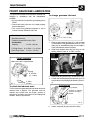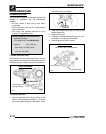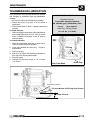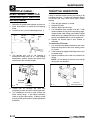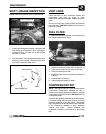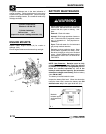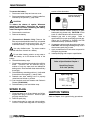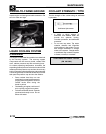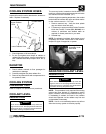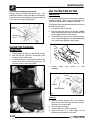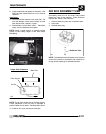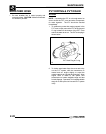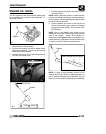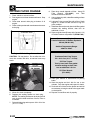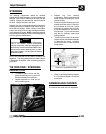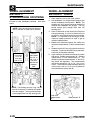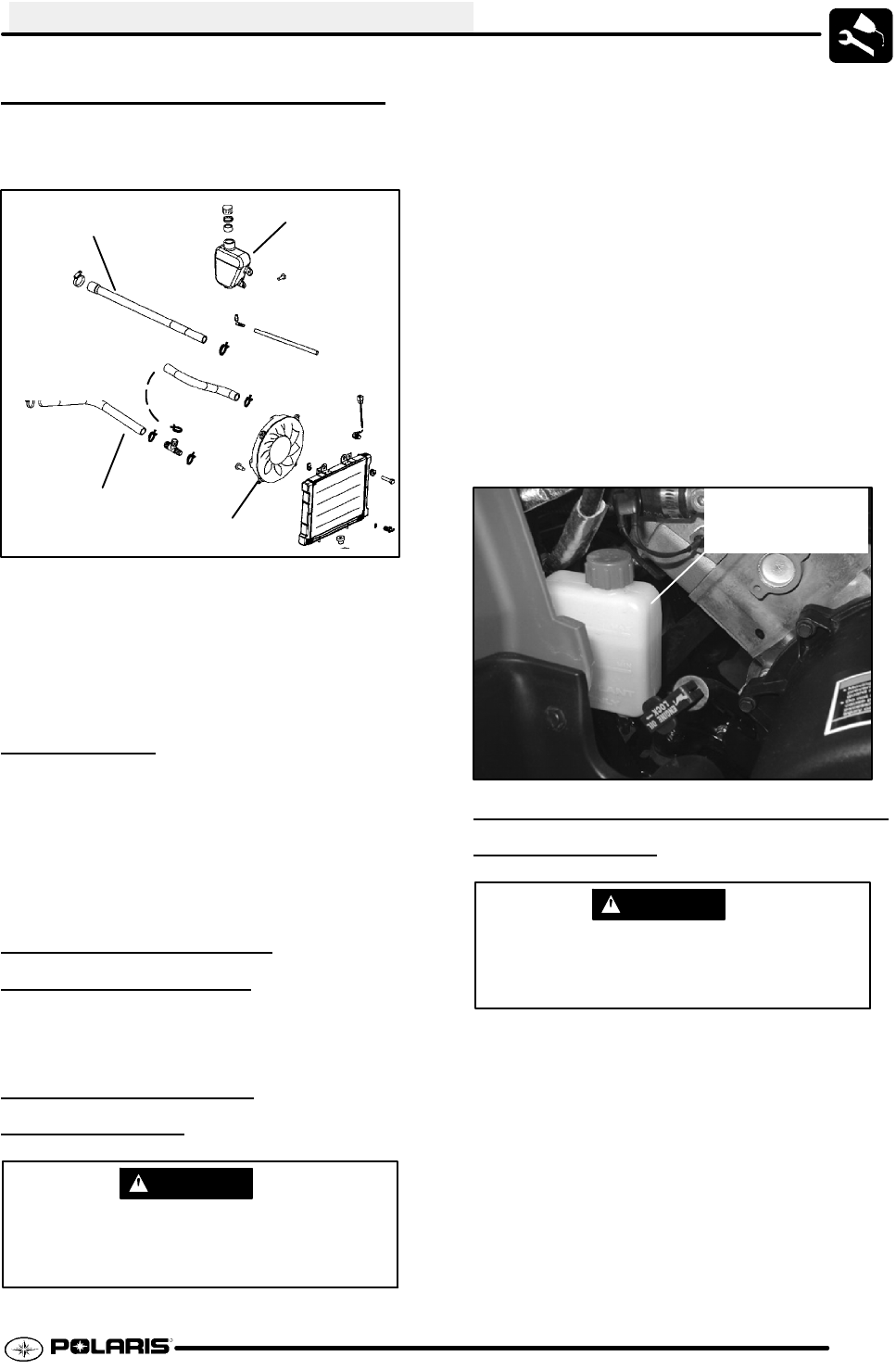
MAINTENANCE
2.19
COOLING SYSTEM HOSES
Inspect all hoses for cracks, deterioration, abrasionor
leaks. Replace if necessary.
Lower Radiator Hose
Upper Radiator
Hose
Coolant Bottle
Fan
1. Check tightness of all hose clamps.
2. Do not over-tighten hose clamps at radiator or
radiator fitting may distort, causing a restriction or
leak. Radiator hose clamp torque is 36 in. lbs. (4
Nm).
RADIATOR
1. Check radiator external air flow passages for
restrictions or damage.
2. Carefully straighten any bent radiator fins.
3. Remove any obstructions with compressed air or
low pressure water.
COOLING SYSTEM
PRESSURE
TEST
Refer to Chapter 3 for pressure test procedures.
COOLANT LEVEL
INSPECTION
WARNING
Never remove the radiator pressure cap when the
engineis warm orhot. Escapingsteam andfluidcan
cause severe burns. The engine mustbe allowed to
cool before removing the pressure cap.
The recovery bottle, located on the left side of the
machine,mustbemaintainedbetweentheminimum
and maximum levels indicated. (Ill.1)
With the engine at operating temperature, the coolant
level should be between the upper and lower marks
on the coolant reservoir. If it is not:
1. Remove reservoir cap. Verify the inner splash
cap vent hole is clear and open.
2. Fill reservoir to upper mark with Polaris Premium
60/40 Anti Freeze / Coolant (PN 2871323)ora
mixture of antifreeze and distilled water as
required for freeze protection in your area.
3. Reinstall cap.
NOTE: If overheating is evident, allow system to cool
completely and check coolant level in the radiator.
Inspect for signs of trapped air in system.
Recovery Bottle
Accessible Under
Side Panel
Ill.1
RADIATOR COOLANT LEVEL
INSPECTION
WARNING
Never remove the radiator pressure cap when the
engineis warm orhot. Escapingsteam andfluidcan
cause severe burns. The engine mustbe allowed to
cool before removing the pressure cap.
NOTE: This procedure is only required if the cooling
system has been drained for maintenance and/or
repair. However, if the recovery bottle has run dry, or
if overheating is evident, the level in the radiator
should be inspected via the radiator cap first and
coolant added if necessary.
NOTE: Use of a non-standard pressure cap will not
allow the recovery system to function properly.



